The Vocal Vibrations music is now available for exclusive download from Bowers & Wilkins.
Vocal Vibrations just concluded its exhibition at Le Laboratoire Cambridge in March 2015.
The original installation at Le Laboratoire Paris ran from March to September 2014.
Vocal Vibrations in the press
Boston Globe
Trend Tablet
Huntington News
Tufts Daily
Tod Machover, Charles Holbrow, Elena Jessop, and Rebecca Kleinberger.
Vocal Vibrations explores the relationships between human physiology and the resonant vibrations of the voice. The voice is an instrument everyone possesses. It is incredibly individual, infinitely expressive, and intimately linked to the physical form. In collaboration with Le Laboratoire in Paris and The Dalai Lama Center at MIT, we are examining the hypothesis that the singing voice can influence mental and physical health through physicochemical phenomena and in ways consistent with contemplative practices. We are developing a series of multimedia experiences, from solo "meditations" to group "singing circles," that explore possible emotional, cognitive, and physical transformations, all in an enveloping context of immersive music.
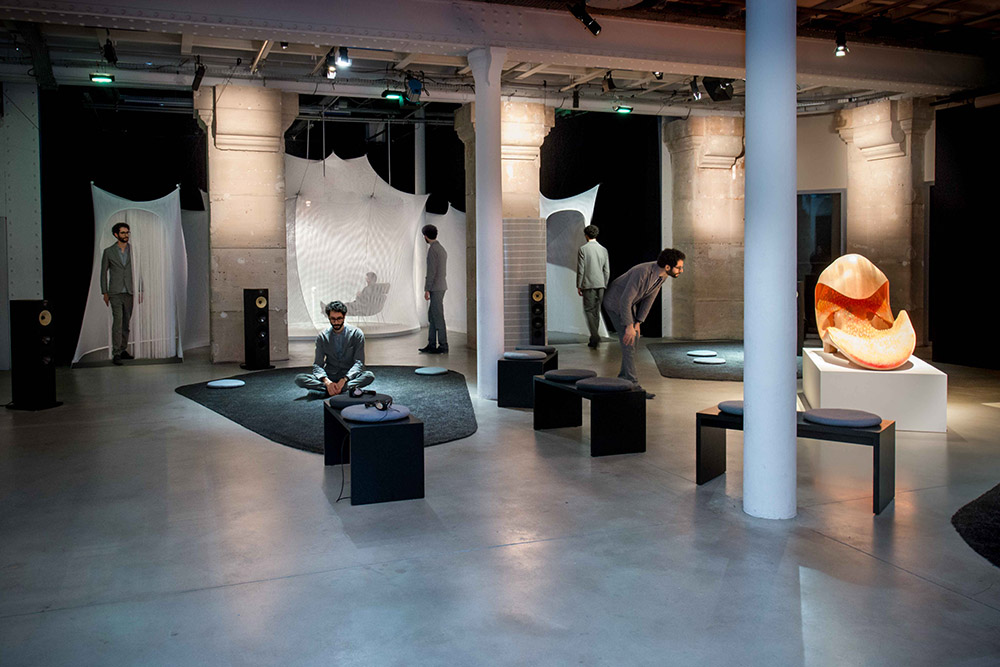
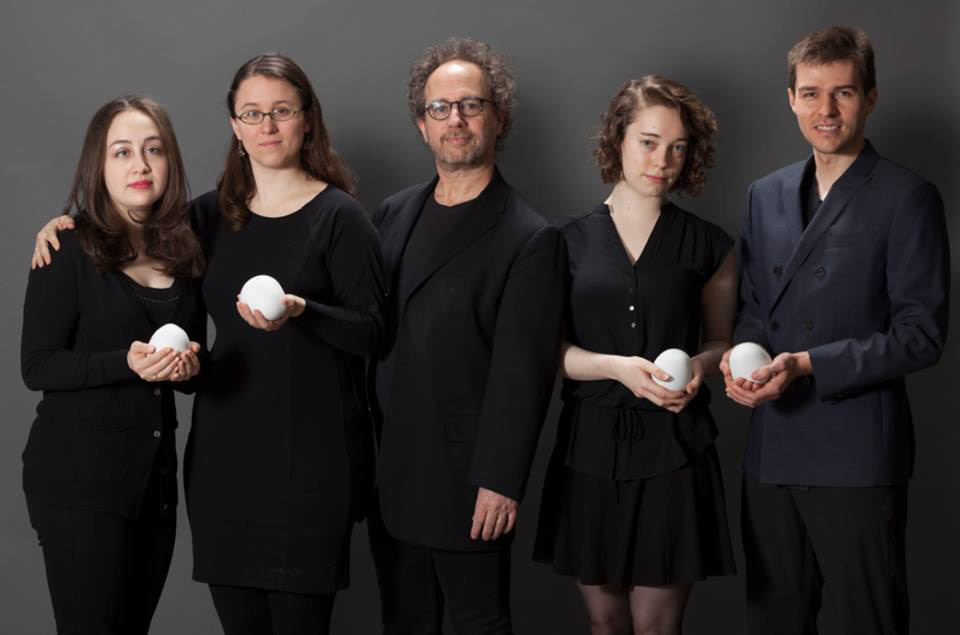
The Vocal Vibrations team: Simone Ovsey, Elena Jessop, Tod Machover, Rebecca Kleinberger, and Charles Holbrow

The public "Chapel" space encourages careful and meditative listening. The composition in the Chapel centers on a D, which participants are encouraged to follow.
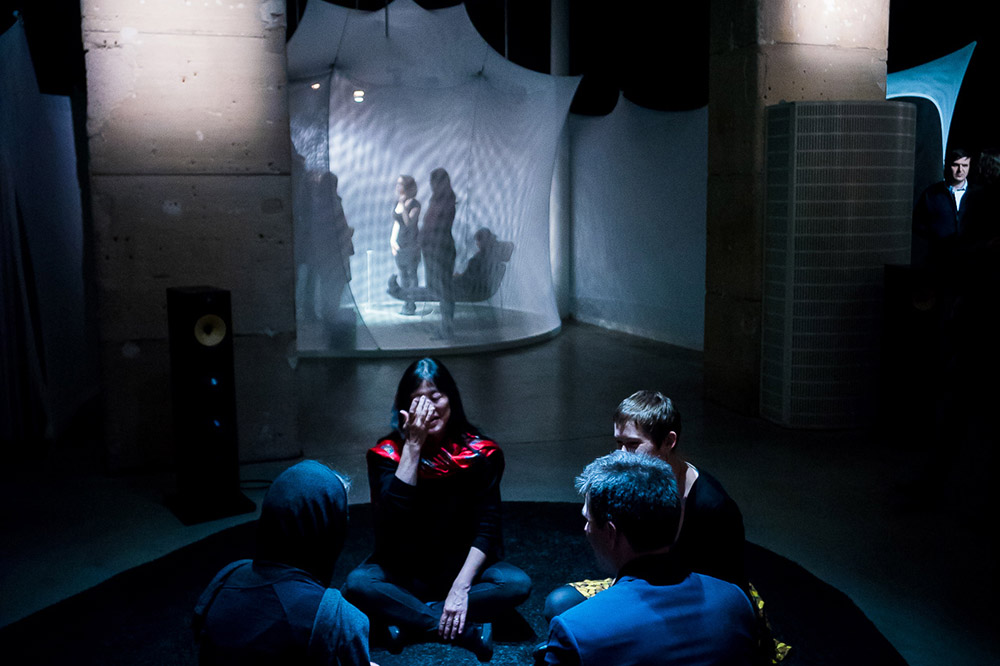
To produce the music for Vocal Vibrations, vocal material by Tod Machover was recorded by the early music choral ensemble Blue Heron directed by Scott Metcalfe, and by soprano Sara Heaton. The Tuvan throat-singing ensemble Alash also did some initial recording for the project in the MIT Media Lab studios.
Tod Machover used these recordings and other materials to create two related compositions for Vocal Vibrations, "Chapel Music" for a collective listening experience in the larger space, and "Cocoon Music" for an individual experience. Chapel Music is designed to play for long periods of time with no beginning or end, so that listeners can enter and leave at will. The music ebbs and flows, varies constantly in texture and frequency, but always stays relatively calm as well as focused on the central D note.

Headphones in the space help visitors find the D so they can participate in the music.
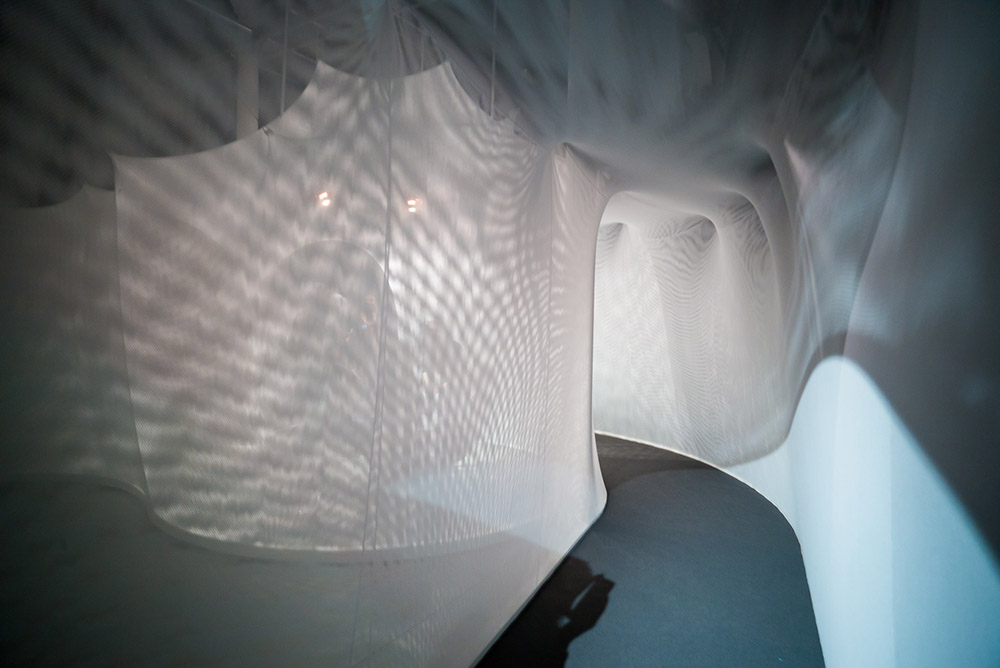
The private "Cocoon" environment guides an individual to explore his or her voice and its vibrations, augmented by tactile and acoustic stimuli. Cocoon Music has a carefully shaped 6-minute form, starting with a single note and flowing through extremes of counterpoint and harmony, before ending as it began. Participants are asked to sing the D which is always present, while following the changes in loudness, timbre, spatial position, and type of vibration with one's voice. The voice is converted into vibration that is felt through a handheld device called the ORB.
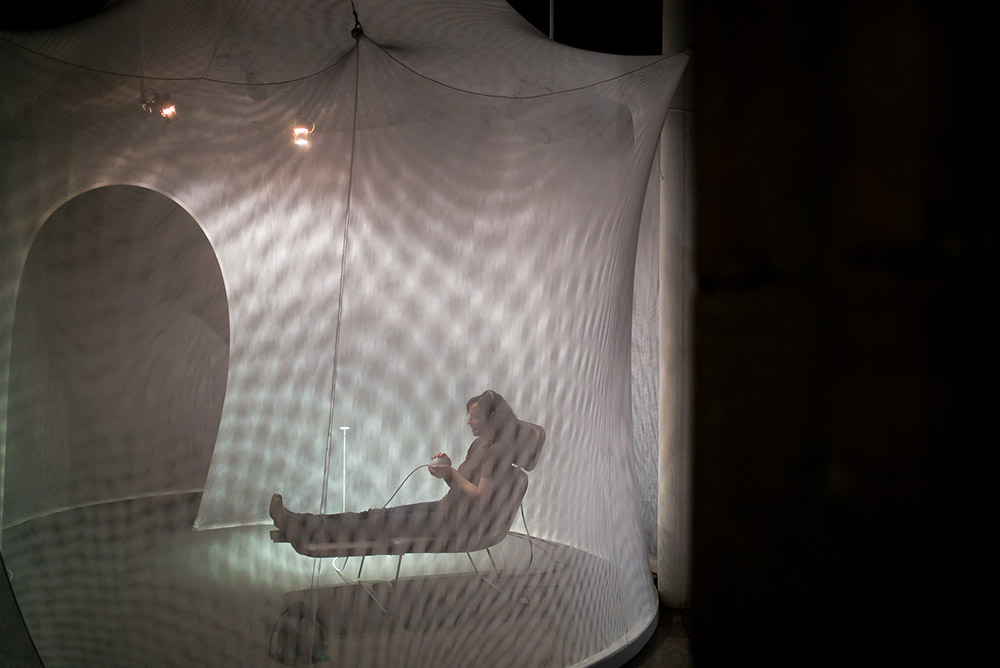
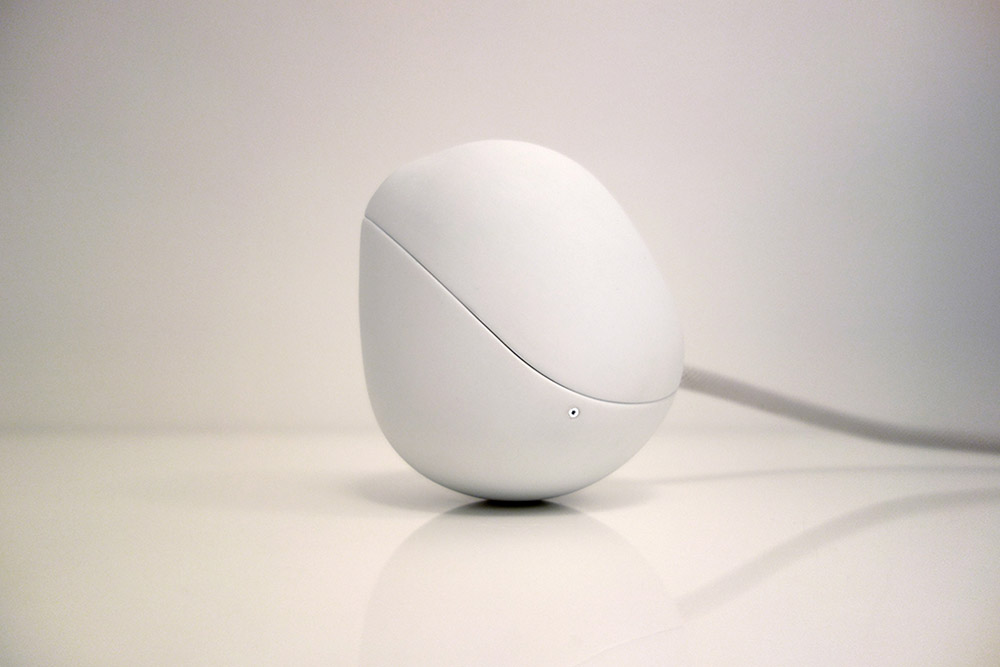
The ORB allows users to experience their voices as tangible patterns of vibration. The shape of the ORB was designed in collaboration with Bold Design.
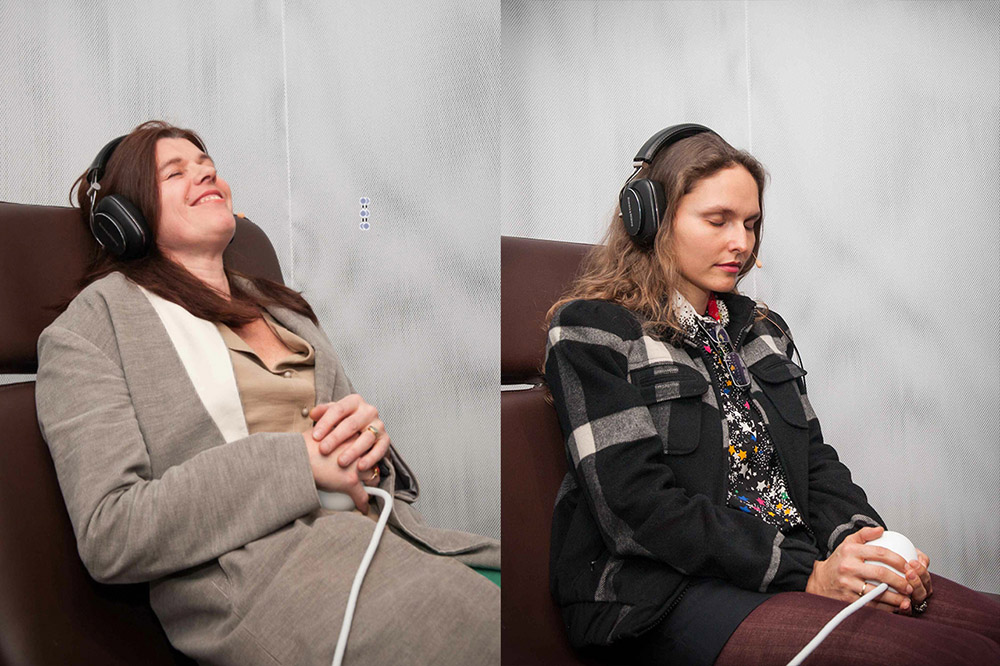
Both the Chapel and Cocoon Music were arranged, produced and engineered to enhance the emotional effect of listening and participating. For the Chapel, the engineering takes advantage of the resonant acoustics of the space at Le Laboratoire in Paris. We use minimal equalization, dynamics processing, and no artificial reverb, letting the room itself provide acoustic treatment. The composition is mixed to 10 floorstanding Bowers & Wilkins 863 speakers arranged in a circle around the perimeter of the room. Using a combination of customized and commercial engineering tools, we create an enveloping and dynamic soundscape while making sure the quality of sonic movement in the space matches the meditative but alert aesthetics of the experience.
Extreme spatialization - incorporating some binaural techniques - was used for the Cocoon, so that all details of quite complex textures remain clear and distinct when needed, blended and focused at other moments.
Listen to an excerpt from the Cocoon composition.
Bowers and Wilkins provided all of the speakers and headphones for Vocal Vibrations, as described further in their post about the installation.
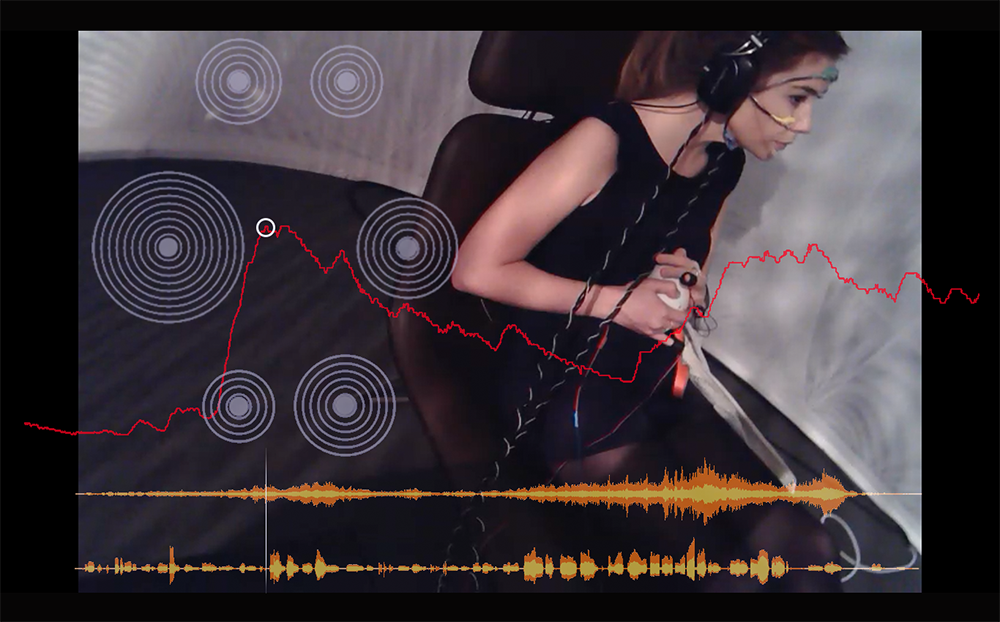
In conjunction with the Vocal Vibrations installation, we are also performing studies to investigate how vocal sounds, vocal vibrations, singing experience, and psychophysiological signals interact.
Tod Machover discusses Vocal Vibrations for PBS NewsHour.
Listen to an excerpt from the Chapel, accompanied by images from the installation.
For more technical detail about the installation, see our paper that was published at the New Interfaces for Musical Expression conference in July 2014.